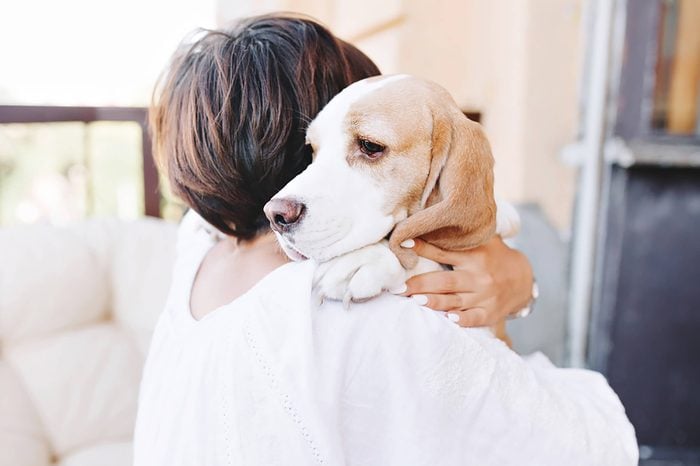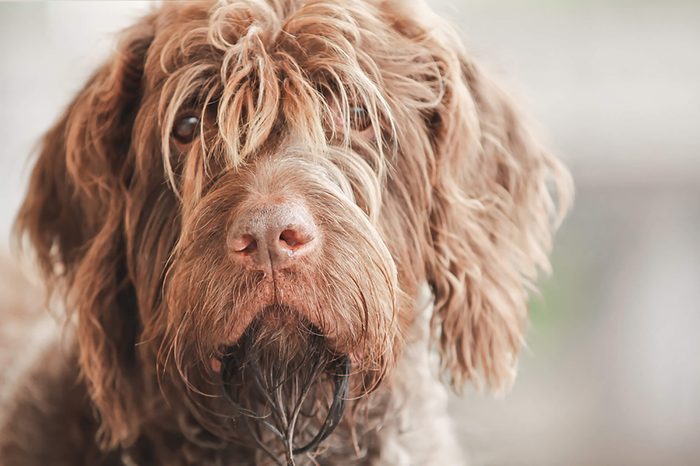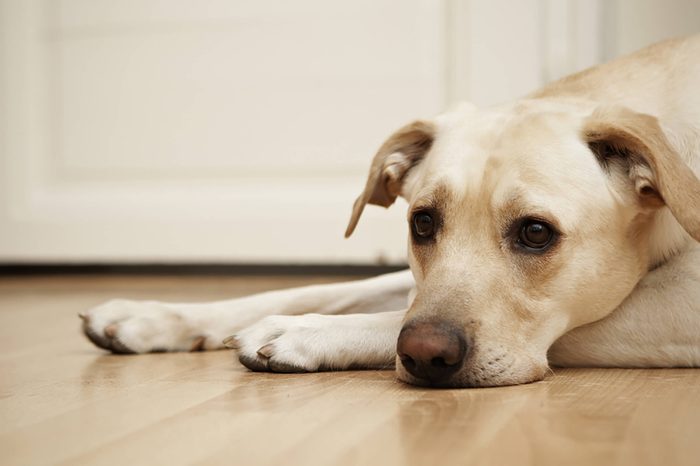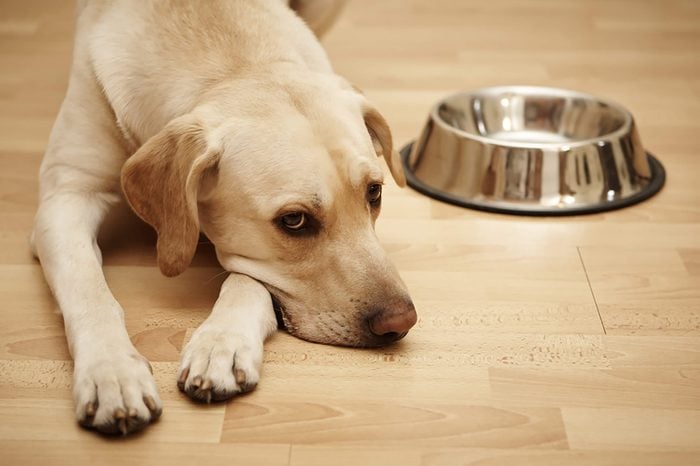
Things to know about dog flu
Canine influenza is a virus that attacks the respiratory tract of dogs. It’s highly contagious, spreading from dog to dog via coughs, sneezes, barking, and saliva from toys and bowls. While canine influenza is not the same strain of influenza as human influenza and is not zoonotic (aka it cannot be transferred to humans), it’s certainly spreading like wildfire in dogs across the country. According to Newsweek, dog flu has been diagnosed across the United States and has even spread up into Canada.
Find out the silent signs your dog is sick.

How can you tell if your dog is sick?
Dogs can be stoic and hide symptoms of disease very well, so sometimes it’s hard to tell your companion is under the weather. Dr. Heather Dean of Colquitt Animal Hospital in Georgia says, “Infections can cause mild to severe illness in dogs. Some dogs may develop secondary bacterial infections which may lead to more severe illness and pneumonia.” And with super common respiratory symptoms, dog flu can look like other, less serious illnesses, so it’s important to address any abrupt changes or sudden onset symptoms as soon as possible. Find out the 50 secrets your dog won’t tell you.

Dog flu symptom: Nasal discharge
An early symptom of canine influenza is a thick, yellow, or greenish nasal discharge. More than just a sniffle, this mucus can come on quickly and last as long as three weeks.

Dog flu symptom: Lack of appetite
While it may not be uncommon for some dogs to skip a meal, lack of appetite can also be a red flag for a more serious condition. If it’s accompanied by any other abnormal behaviors or signs of illness, is unusual for your pet, or goes on for a few days, call the vet.

Dog flu symptom: Trembling or shivering
Often associated with cold, trembling or shivering is also a classic sign of fever and can also be a pain response. If your pooch has a case of the shivers but is not in a cold environment (and is not a chihuahua!), it could mean he or she has a fever.

Dog flu symptom: Lethargy
The flu can make even the most stalwart feel awful, and your dog is no exception. If your normally boisterous puppy is lying around, not interested in normal, day-to-day routines, he might be sick. Keep an eye on him and if you notice any other troubling symptoms or behaviors, it could be a symptom of dog flu.

Dog flu symptom: Increased body temperature
Normal body temperature for a healthy dog can be anywhere from 100 to 102 degrees Fahrenheit, so a temperature of 104 to 105 is notable. They will feel warm to the touch and their gums may be dry and tacky or bright pink. Do not give your dog over the counter human anti-inflammatories for fever, as ibuprofen, acetaminophen, and many other human medicines are deadly for dogs. If you think your dog has a fever, you should call your veterinarian. All dog owners should know these 12 foods that could kill your dog.

Dog flu symptom: Glassy eyes
Similar to humans, dogs can also develop a glassy-eyed stare when they have a fever. If you suspect your pet has a fever, talk to your vet.

Dog flu symptom: Coughing
The most common of all dog flu symptoms is a persistent cough. This type of cough can last anywhere from 10 to 21 days and is a hallmark symptom of canine influenza. Cough should not be treated with human cough suppressants as they can harm your pooch. Seek treatment from your veterinarian.

Dog flu symptom: Sneezing
Just like in human flu, canine influenza causes upper respiratory symptoms, including sneezing. The accompanying nasal discharge can make sneezing messy and fairly constant through the duration of the illness.

Treatment
If you think your dog may be exhibiting dog flu symptoms, call your vet and schedule and appointment. When you arrive for your appointment, Dr. Dean recommends briefly leaving your dog in the car while you quickly let the receptionist know you’re there. “The veterinarian may wish the pet to remain in the car until they can be moved directly into an exam room or take other precautions to prevent contaminating the lobby and infecting any patients who may be waiting to be seen.” Ask the receptionist to call your phone when they’re ready for you so you can sit with your dog in your car while you wait. Read these 50 secrets veterinarians won’t tell you.

Prevention
If your dog is unvaccinated for canine influenza, avoid dog parks and groomers, boarding facilities, and doggie daycares. Clean all leashes and toys. Also, discuss whether the dog flu vaccine is appropriate for your pup. If your dog never leaves home and doesn’t come into contact with other dogs, the vaccine might be unnecessary as risk of infection is low.